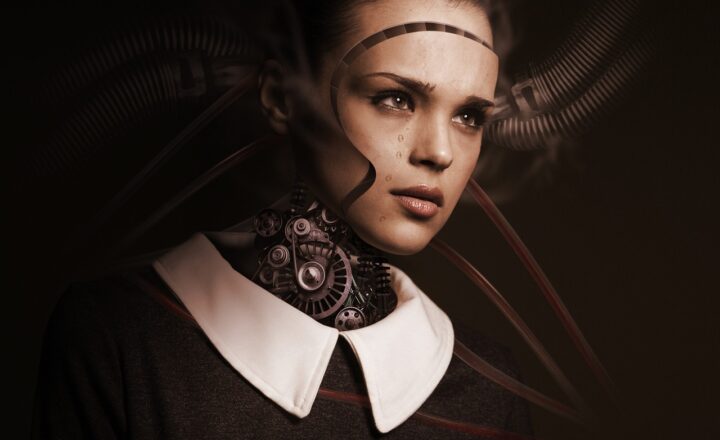
The Turing Test, introduced by the British mathematician and computer scientist Alan Turing in 1950, aims to evaluate a machine’s ability to exhibit intelligent behavior indistinguishable from that of a human. This test has become a cornerstone of artificial intelligence (AI) research, shedding light on the capabilities and limitations of machines in mimicking human cognition.
1. The Origin of the Turing Test
In his groundbreaking paper, “Computing Machinery and Intelligence,” Turing posed a vital question: “Can machines think?” He then proposed a practical test to assess this by imagining a game of imitation involving three participants: a human interrogator, a human respondent, and a machine. The goal of the interrogator is to determine which of the two respondents is human and which is a machine by asking a series of questions. If the interrogator cannot reliably distinguish the machine from the human, the machine is said to have passed the Turing Test.
Turing’s test was not a measure of a machine’s ability to think but rather its capacity to engage in conversation in a way that is indistinguishable from that of a human.
2. The Structure of the Turing Test
The Turing Test consists of several stages:
- Setup: Three entities (two respondents and one interrogator) are arranged in separate rooms to prevent visual identification. The interrogator communicates with the respondents via a text-based interface.
- Interrogation Phase: The interrogator asks questions to both the human and the machine, seeking to identify the human based on the responses. Questions can vary from personal experiences to objective queries about facts.
- Analysis Phase: Once the interrogation is complete, the interrogator must conclude which respondent is human and which is the machine based solely on the answers provided. If the machine fool the interrogator, it passes the test.
This design emphasizes the importance of conversational ability and contextual understanding as markers of intelligence, rather than simply knowledge recall or computational power.
3. Evolution of the Turing Test in AI Development
As AI technology has progressed, so too has the interpretation and application of the Turing Test. Here are some key developments:
- Natural Language Processing (NLP): Advanced NLP has enabled machines to process human language with extraordinary accuracy and mimic conversational styles. Applications like chatbots and virtual assistants have brought Turing’s vision closer to reality.
- Conversational Agents: AI systems such as GPT-3 demonstrate the ability to produce human-like text and carry on seemingly meaningful conversations. Although they might not pass the Turing Test in every scenario, their sophistication illustrates significant progress in AI.
- Narrow vs. General Intelligence: While the Turing Test focuses on narrow AI (specific tasks), the quest for artificial general intelligence (AGI) continues, where machines would possess cognitive abilities comparable to human beings across various domains.
Understanding the Turing Test and its implications helps shape our expectations of AI and influences the ethical considerations surrounding machine intelligence.
4. Criticism and Limitations of the Turing Test
While the Turing Test is a valuable framework for discussing AI, it is not without criticism. Here are some key points of contention:
- Behaviorism Over Understanding: Critics argue that passing the Turing Test does not equate to genuine understanding or consciousness. Machines can simulate conversation without grasping its meaning, as seen with certain chatbots that produce sensible responses without real comprehension.
- The Chinese Room Argument: Philosopher John Searle proposed this thought experiment to illustrate that a machine executing programmed responses does not possess understanding—merely manipulation of symbols, akin to someone in a room following instructions in a language they do not comprehend.
- Complexity and Context: The test relies on the interrogator’s ability to engage meaningfully. A poorly constructed or unpredictable question can lead to faulty assessment of the machine’s intelligence.
The questions surrounding the Turing Test push us to think critically about what we consider intelligence, further blurring the lines between human cognition and machine capabilities.
5. The Future of AI and the Turing Test
As AI continues to evolve, so too will our understanding and assessment of machine intelligence. The Turing Test may serve as a historical benchmark, but it may not be the definitive way to measure AI. Future approaches could include:
- Ethical AI Frameworks: As machines potentially gain more capabilities, developing ethical guidelines for their use will be crucial. This could include focusing less on imitation and more on decision-making in complex situations.
- Incorporation of Emotional Intelligence: Future tests may examine a machine’s ability to exhibit empathy and emotional understanding, which extends beyond simple conversation.
- Multi-Dimensional Assessments: New evaluations may incorporate broader cognitive tasks such as reasoning, problem-solving, and learning efficiency to develop a comprehensive picture of machine intelligence.
Ultimately, as we strive to understand human intelligence and the extent to which AI can replicate it, the Turing Test stands as a significant, albeit imperfect, measure of our progress in developing intelligent machines.
Conclusion
The Turing Test remains a pivotal concept in the field of artificial intelligence, encapsulating the ongoing dialogue about what it means for machines to “think” or “understand”. As technology advances, the conversation around AI will continue to evolve, revealing new insights into both machine capabilities and the nature of human intelligence. Engaging with these concepts not only shapes our future with technology but also prompts us to reflect on our own cognitive abilities and what sets us apart as sentient beings.
If you seek to understand AI’s potential further, the Turing Test offers a fascinating starting point, inviting you to ponder the extent to which machines can mimic human thought and behavior, as they gradually reshape our world.







